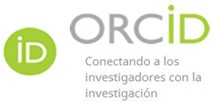Editorial process
The Journal uses the Open Journal System (OJS) computer system to manage the editorial process, which automates this procedure.
It develops as follows:
1. The author sends the manuscript to the Journal. For your shipment you must always do it through the platform:
• You must register on the Journal's website.
• Before uploading the article, you are asked to make certain confirmations (declaration of authorship and originality, declaration of exclusivity, conflicts of interest, approval of its publication as Open Access, etc.).
2. Before definitively sending the file, it is necessary for the authors to verify that they have entered the metadata properly placed on the platform.
Note: Files uploaded to the platform must not exceed 3Mb in weight. If so, the authors must send it via email , indicating the article to which they belong. The editor will be in charge of notifying its reception and incorporating it into the documentation of the article.
3. The author will receive confirmation of receipt of his article within 5 days of sending it. In the period of one month from said reception, the Journal has the obligation to give an answer to its authors in relation to:
• Admission of work and submission for evaluation by experts.
• If there is rejection by the Editorial Board before sending the article for evaluation, if it is considered that it presents formal or thematic deficiencies important enough to not continue with the procedure.
• Need to make essential formal changes before it is sent to evaluation by experts. The Journal undertakes to strictly follow the recommendations made by its evaluators.
4. Regarding the positions of the reviewers, the following criteria will be followed:
• If the two evaluators agree on what is appropriate for its publication, the authors will be informed in this way, in a single document.
• If both experts issue a negative opinion, the article will be rejected.
• If there is a discrepancy, a third evaluator will be asked to decide whether to approve it or the editor will decide.
• If the evaluators consider it necessary to make changes, the authors will be asked for a second version. The decision on this version will be decisive to issue a final judgment.
Once its publication is confirmed, the Journal may issue certificates to the authors regarding the publication of their article if they so request. Otherwise, they will be issued after the publication of the corresponding number.
5. The article will go to correction. The proofreader will send the galleys to the author in .pdf format.
Once the modifications have been made by the authors, they can send it via email, within a Word document.
When there is more than one author, the corrected article will be sent only to the person who indicated the group when sending the original version and the communication will be with this person, unless otherwise indicated to the Director and/or Editor. The proofreader will receive back a single document with all the requested changes. In no case may the article be modified in such a way that it changes the final version approved by the evaluators.





